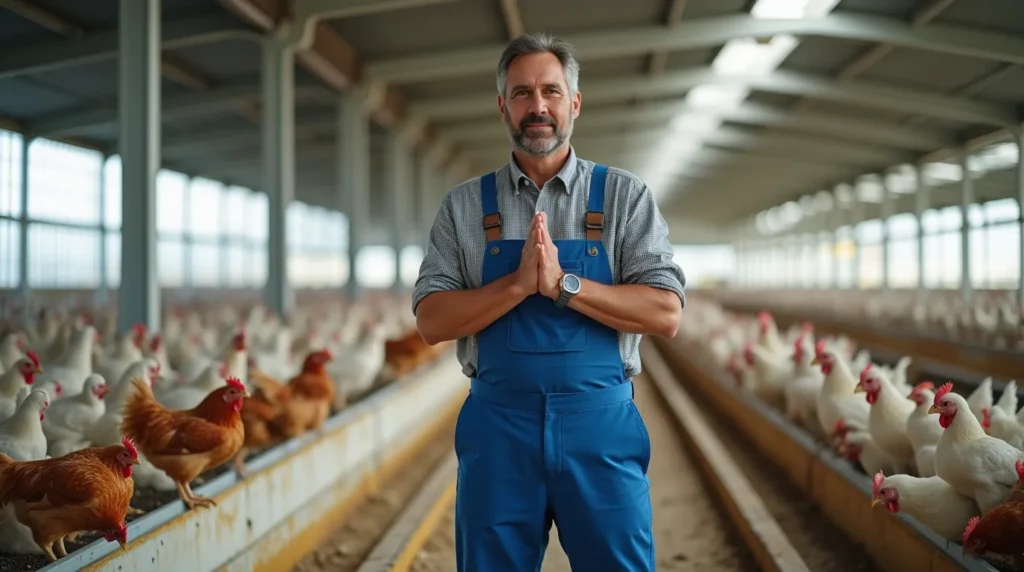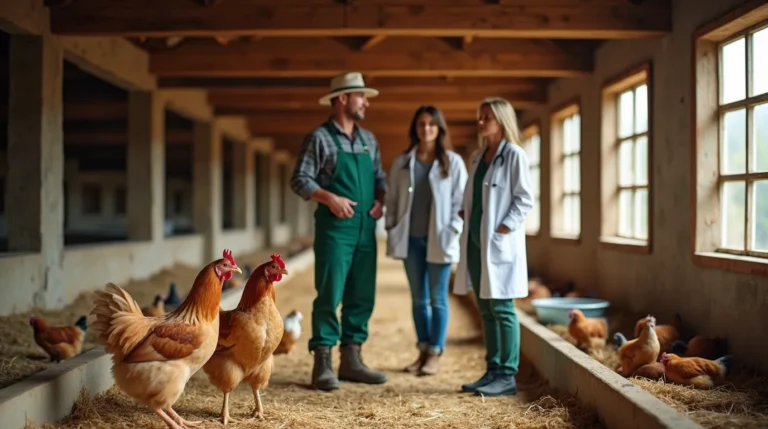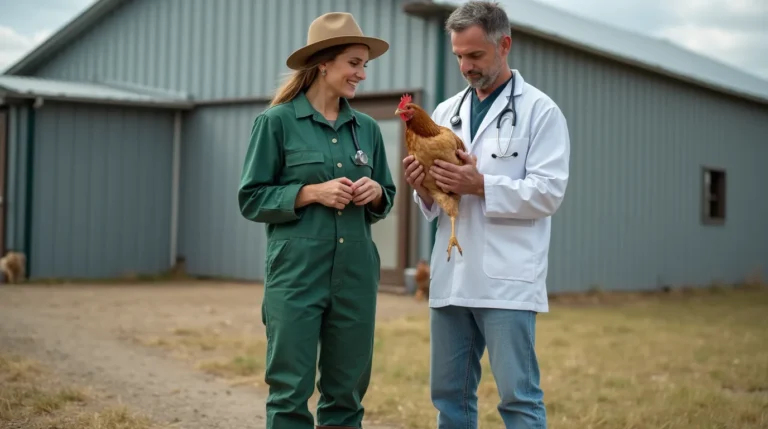Protect your poultry from Newcastle Disease in poultry: Learn the critical warning signs, prevention strategies, and expert containment methods to safeguard your flock’s health.

Table of Contents
Newcastle Disease is a highly contagious viral infection that poses a significant threat to poultry farmers and backyard chicken enthusiasts alike. This devastating disease can rapidly spread through a flock, causing substantial economic losses and potentially devastating entire poultry operations. In this comprehensive guide, we’ll explore the critical warning signs of Newcastle Disease in Poultry, provide expert insights into containment strategies, and equip you with the knowledge to protect your valuable birds.
What is Newcastle Disease?
Newcastle Disease is a severe viral infection caused by the avian paramyxovirus type 1 (APMV-1), which affects a wide range of bird species. Characterized by its high mortality rate and potential for rapid transmission, this disease can manifest in three primary forms:
- Lentogenic (Low Virulent) Form: Mild symptoms with minimal mortality
- Mesogenic (Moderate Virulent) Form: Moderate symptoms with increased mortality
- Velogenic (Highly Virulent) Form: Severe symptoms with extremely high mortality rates
Transmission Mechanisms
The virus spreads through multiple pathways:
- Respiratory secretions
- Contaminated feed and water
- Direct contact between infected and healthy birds
- Indirect transmission via equipment, clothing, and human handlers
4 Critical Warning Signs of Newcastle Disease
1. Respiratory Distress
Key Indicators:
- Labored breathing
- Gasping and coughing
- Unusual respiratory sounds
- Nasal discharge
Impact: Respiratory complications can quickly compromise a bird’s ability to breathe, leading to potential suffocation and rapid decline.
2. Neurological Symptoms
Neurological Red Flags:
- Tremors and muscle spasms
- Twisted neck (torticollis)
- Loss of balance
- Partial or complete paralysis
- Circling behavior
Significance: Neurological symptoms indicate advanced disease progression and severe nervous system involvement.
3. Digestive System Disruptions
Digestive Tract Warning Signs:
- Diarrhea
- Reduced feed intake
- Significant weight loss
- Decreased egg production
- Soft or malformed eggs
Consequences: Digestive disruptions can lead to rapid weight loss and compromised bird productivity.
4. Sudden Mortality
Mortality Characteristics:
- Rapid, unexplained bird deaths
- High percentage of flock mortality
- Deaths across different age groups
- No apparent prior symptoms
Critical Observation: Sudden, unexplained deaths can indicate a velogenic strain of Newcastle Disease.
Diagnostic Approaches
Laboratory Confirmation
- Polymerase Chain Reaction (PCR) testing
- Virus isolation
- Serological examinations
- Necropsy investigations
Diagnostic Challenges
- Early-stage symptom similarity with other diseases
- Varying virus strains
- Potential asymptomatic carriers
Comprehensive Containment Strategies
Immediate Isolation Protocols
- Quarantine infected birds
- Restrict farm access
- Implement strict biosecurity measures
- Disinfect equipment and facilities
Vaccination Strategies
Recommended Vaccination Schedule:
- Day-old chicks: Initial vaccination
- 4-6 weeks: Booster vaccination
- Ongoing: Regular immunization based on risk assessment
Biosecurity Best Practices
- Limit visitor access
- Use dedicated clothing and footwear
- Implement thorough cleaning protocols
- Maintain strict hygiene standards
Recommended Pet Products on Amazon
- Poultry Disinfectant Spray
- Protective Biosecurity Coveralls
- Digital Thermometer for Flock Monitoring
- Comprehensive Poultry Health Kit
Newcastle Disease in poultry (FAQ)
Q1: How quickly does Newcastle Disease in poultry spread? A: Newcastle Disease can spread extremely rapidly, potentially affecting an entire flock within 24-48 hours.
Q2: Can humans contract Newcastle Disease? A: Humans can contract a mild form of the disease, typically causing conjunctivitis and flu-like symptoms.
Q3: What is the mortality rate? A: Mortality rates vary from 10% in low virulent strains to over 90% in velogenic strains.
Q4: How long does the virus survive outside a host? A: The virus can survive up to 3 months in contaminated environments under specific conditions.
Call-to-Action
Protect your flock and prevent devastating losses! Explore more expert pet care tips and comprehensive guides at BlithePet for professional recommendations and in-depth poultry health insights.
Conclusion
Understanding Newcastle Disease in Poultry in au is crucial for maintaining a healthy, productive flock. By recognizing early warning signs, implementing robust containment strategies, and prioritizing preventative measures, poultry farmers can significantly mitigate the risks associated with this serious viral infection.
Share Your Experience: Have you encountered Newcastle Disease in your flock? Leave a comment below and help fellow poultry enthusiasts learn from your insights!





